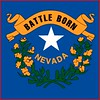The easiest way to understand the idea is explained by Alex J. Pollock writing in American.com:
Would anybody rationally pay $1.02 for $1.00 in cash? They do today, if they take cash as a non-customer from an ATM. The average ATM surcharge fee is about $2. For a $100 withdrawal, that is equivalent to a price of $1.02. Alternately thought of, if a $200 withdrawal were cash for one month, the average fee would be equivalent to a negative 12% interest rate.
Currently, the banks are using the bailout money to increase their deposits with the Fed in an effort to cover all their bad loans and toxic assetts. One way to get the banks to release the money would be for the Fed to "go negative", giving the banks an incentive to put their newfound wealth somewhere else.
The problem for the Fed right now is that all other interest rates, including passbook savings accounts, ultimately take their cue from the Fed Funds Rate. Imagine the political fallout when us commoners are not only paying to bailout the banks with our tax dollars, but seeing our savings drained by those very same banks. The resulting bank run would not only bring on the collapse of the Federal Reserve System, but would surely spell the end of several political careers.
It's the proverbial rock and a hard place and a good reason why I believe the Federal Reserve System is about to be replaced, either by choice or by default.




No comments:
Post a Comment